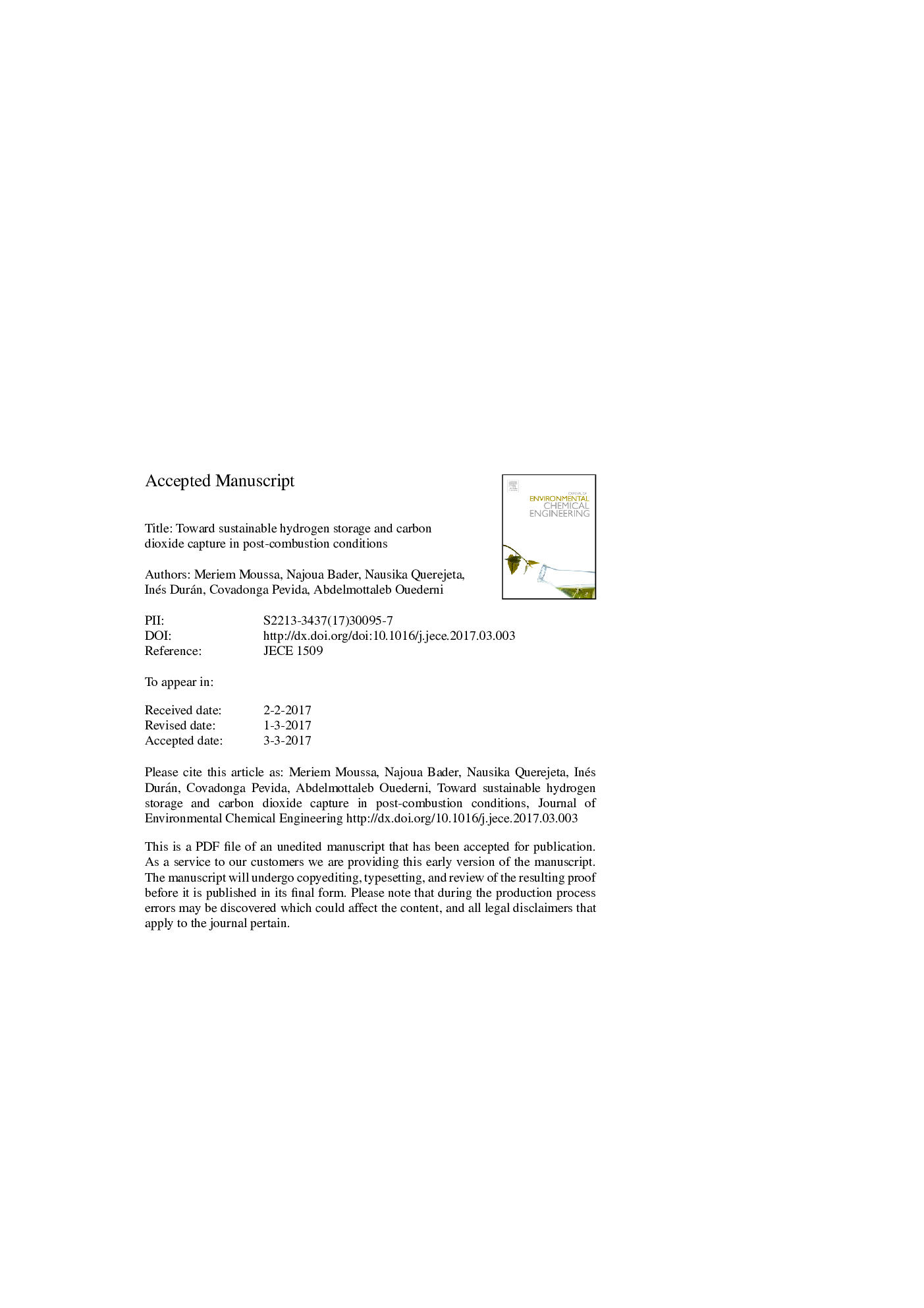| Article ID | Journal | Published Year | Pages | File Type |
|---|---|---|---|---|
| 4908501 | Journal of Environmental Chemical Engineering | 2017 | 34 Pages |
Abstract
This work addresses two environmental issues of major concern: hydrogen storage for hydrogen economy implementation and CO2 capture to reduce greenhouse gas emissions. For these purposes, two granular activated carbons were synthesized through chemical activation of olive stones by means of potassium salts (KOH and K2CO3). The porosity characterizations reveal typical ultramicroporous carbons with average pore sizes of about 0.53 and 0.69 nm for K2CO3 and KOH-activated carbons, respectively. The volumetric measurements of cryogenic hydrogen adsorption show monolayer process. At sub-atmospheric pressures the narrower micropores show stronger binding energy to hydrogen molecules. However, at higher pressures this porosity range saturates and KOH-activated carbon exhibits a H2 storage capacity of 3 wt%, 70% of which is achievable at only 1 bar. CO2 shows a similar behavior than H2 when it was adsorbed purely at 0 °C, and AC_KOH retains its excellence with a capacity of 5.6 mmol gâ1at 1 bar. Finally, the two carbons were tested as CO2 adsorbents in conditions representative of post combustion capture applications (10% CO2 at atmospheric pressure and at 50 °C). Both carbons show fast adsorption-desorption kinetics, perfectly described by pseudo-first order model. At these conditions, it was proven that only narrow micropores are essential for CO2 adsorption.
Related Topics
Physical Sciences and Engineering
Chemical Engineering
Chemical Engineering (General)
Authors
Meriem Moussa, Najoua Bader, Nausika Querejeta, Inés Durán, Covadonga Pevida, Abdelmottaleb Ouederni,
